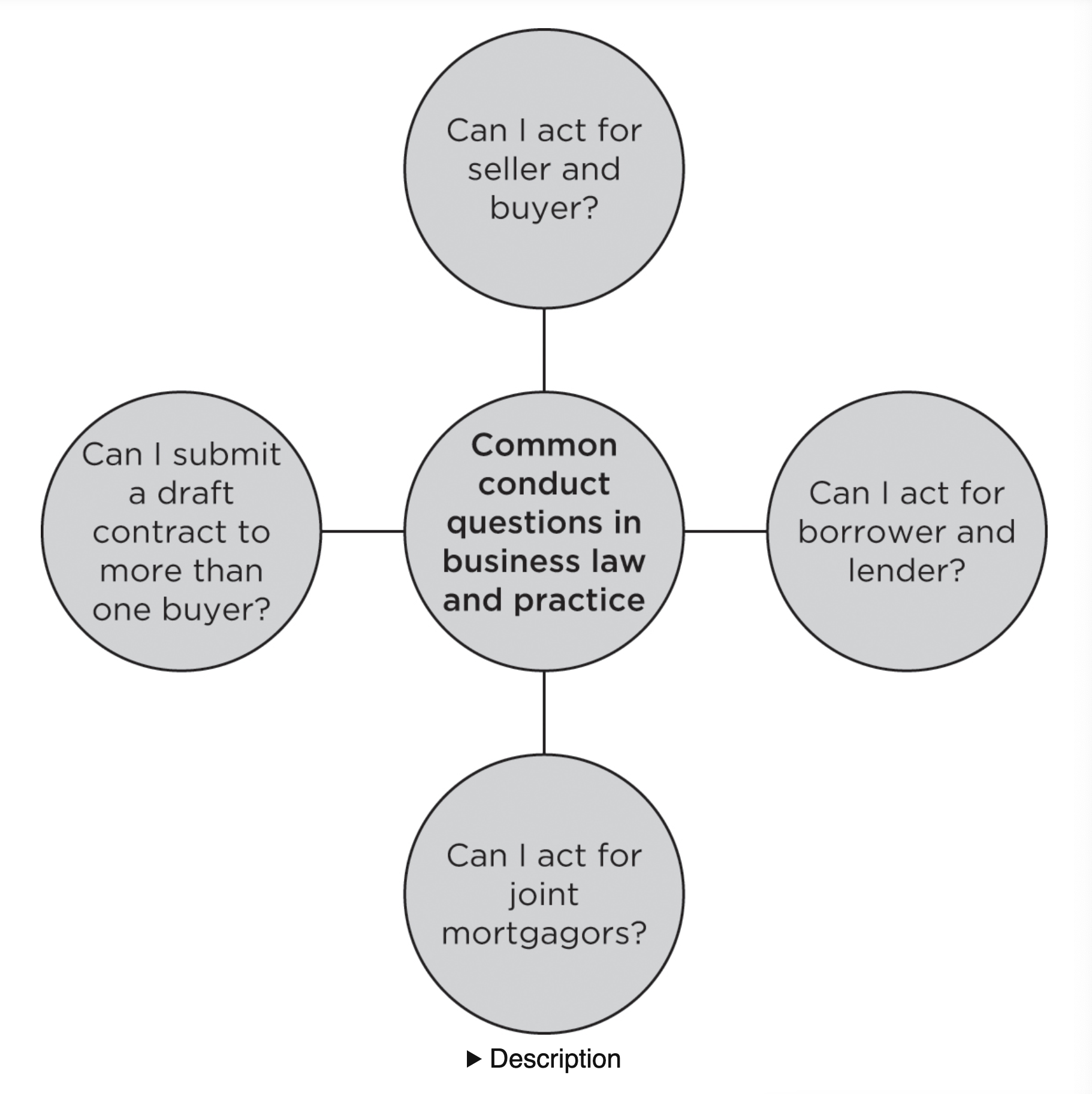Ethics and professional conduct in business law and practice
1/10
There's no tags or description
Looks like no tags are added yet.
Name | Mastery | Learn | Test | Matching | Spaced |
|---|
No study sessions yet.
11 Terms
What are the common conduct questions in business law and practice?
See attached.

What is maintaining trust and integrity in BLP (Business Law and Practice)?
When acting in BLP, you must maintain trust and act fairly in your relationship with your client and others. The Code sets out ways in which you may achieve this, and these are dealt with in turn.
You do not abuse your position by taking unfair advantage of clients or others (Para 1.2): as part of your practice in BLP, you may encounter unrepresented parties and, in such circumstances, there is potential for this duty to be breached (see Chapter 7 of Ethics, Unrepresented parties). This may, for example, be in relation to an unrepresented seller, buyer or party to a commercial contract.
You perform all undertakings given by you, and do so within an agreed timescale, or if no timescale has been agreed, then within a reasonable amount of time (Para 1.3): undertakings are a key element of work in BLP (transaction work in particular). For example, you may be asked to provide an undertaking to hand over documents on completion, discharge pre-existing charges or procure registration of a charge at Companies House. You may also be required to provide an undertaking to pay a third party’s costs.
What is your duty to not mislead clients or others (para 1.4)?
A solicitor must not mislead or attempt to mislead clients or others, either by their own acts or omissions, or by allowing or being complicit in the acts or omissions of others (including their client (Para 1.4). The rule is closely associated with Principles 2, 4, 5 and 7.
Misleading a client: solicitors may mislead a client by, for example, saying that a transaction is at a particular stage, when it is not. This could include confirming that draft documentation has been submitted to a potential buyer, or that a charge has been registered at Companies House.